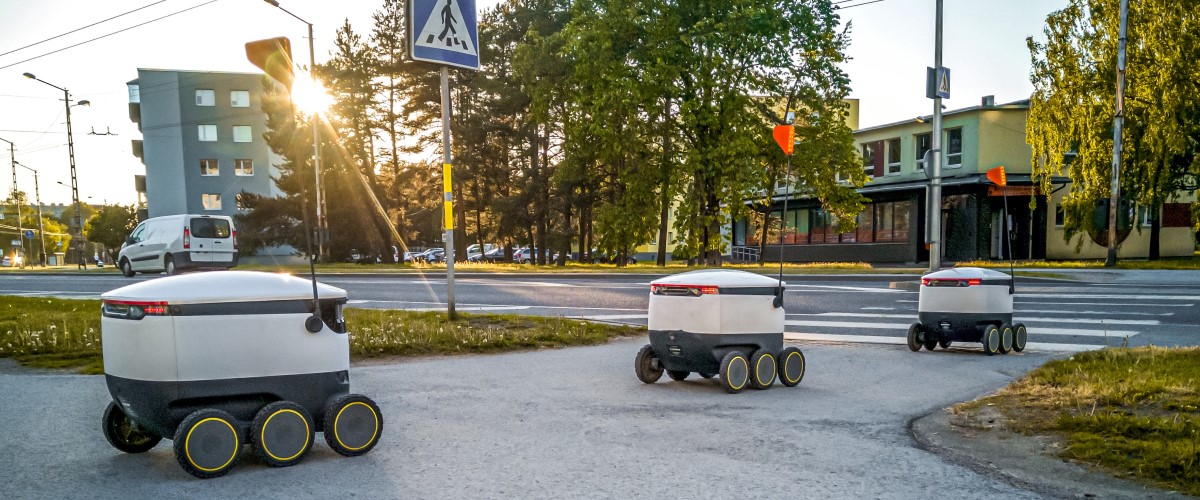Worldwide e-commerce sales have grown six times in the last decade, from $572 billion in 2010 to $3.5 trillion at the end of 2019. This trend has only been accelerated by the COVID-19 pandemic. With more people relying on e-commerce for their daily needs, last-mile delivery systems are becoming the bottleneck, especially with increasing delivery traffic and shrinking labour availability.
As a response to these trends, the World Economic Forum and McKinsey have put together research for how to reform last-mile delivery, using Japan to model simulated projections. Their conclusion was that delivery robots offered the most promising solution, in terms of efficiency and sustainability. Their definition of delivery robot was a “mall, personal delivery devices that can transport packages weighing 100 kilograms or less at a maximum speed of five kilometers per hour or less.”
These delivery robots could be used in sorting centers at the regional level and moving goods from truck to door at the neighbourhood level. The solution of delivery robots would be the best bet for reducing carbon emissions, lowering costs, and responding to challenges like labour shortages.
But for this to become successful, private-sector and public-sector stakeholders would have to collaborate and build consensus on the vision of this solution, but also the specifics on the regional, neighbourhood, and street levels. Here are eight areas that this team identified would require collaboration:
- At the regional level (sorting at centres):
- Standardizing physical bases for area optimization
- Building a data-collection/sharing system for network optimization
- Creating practical guidelines for joint delivery operations
- At the neighbourhood level (delivery via trucks):
- Mapping out potential parking spaces
- Regulating roads across the urban landscape in a harmonized way
- Building a parking-space-reservation system (including supply/demand management and allocation)
- At the truck to door level (delivery with droids):
- Developing detailed map data for location mapping
- Legislating unified rules for unmanned vehicles to be deployed
We find it fascinating to consider how technology and innovation could solve tomorrow’s supply chain challenges. If you’re interested in learning more, please read the summary published at McKinsey’s website, or the briefing paper published by the World Economic Forum.
Sources:
1. Efficient and sustainable last-mile logistics: Lessons from Japan, McKinsey, May 13, 2021. Accessed Oct 18, 2021.
2. The Future of the Last-Mile Ecosystem, World Economic Forum, January 2020. Accessed Oct 18, 2021.


